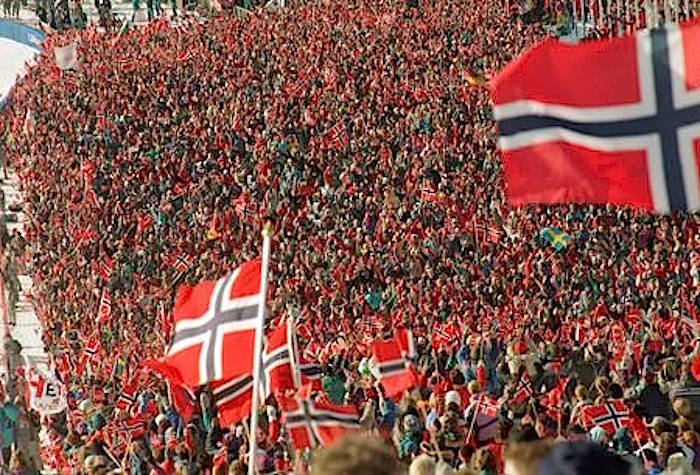The man who organized the most popular Winter Olympics 24 years ago in the Norwegian ski resort of Lillehammer says it’s too soon to return in 2026.
But watch for Lillehammer in 2030.
“2026 would have been best for us, but I have to acknowledge the timing is not there,” Gerhard Heiberg told the Associated Press on Thursday.
He said organizers and politicians had too little time to work out details and financing, but called 2030 “more likely.”
“I’m a little sad,” said Heiberg, a former IOC executive board member, and former chairman of the IOC marketing commission. “If we come forward, we will have a very strong bid.”
Lillehammer might have been the instant favourite for 2026, and its absence opens the race.
Bidders have until Saturday to let the International Olympic Committee know of their interest. In October, the IOC will trim the field to serious contenders and pick the host next year.
At least five serious bids are likely to be on the table: Calgary, Canada; Stockholm, Sweden; Sapporo, Japan; Sion, Switzerland; and Milan-Turin, Italy. Interest might also come from Austria and Turkey.
The Italian Olympic Committee announced on Thursday it sent a letter to the IOC stating its plans with a joint bid from Milan-Turin.
The IOC is trying to avoid what happened in bidding for the 2022 Winter Olympics.
Six European cities pulled out of official or possible bids, balking at soaring costs, political unrest, and the lack of public support expressed in rejected referendums.
That left proposals from two authoritarian governments: Almaty, Kazakhstan, and Beijing. Beijing narrowly won.
The IOC is trying an about-face, talking up austerity and the use of existing or temporary venues.
Costs have scared away bidders. So have white-elephant venues, which still litter Rio de Janeiro, the most recent Summer Olympics host. Empty venues also threaten the Pyeongchang Winter Olympics, which closed just a month ago.
IOC President Thomas Bach has said flatly: No more experimenting with non-traditional winter sports areas like Sochi, Russia, and Pyeongchang.
“We have to think that now is the time to go back with the winter games to a traditional winter sports country,” Bach said a few weeks ago in Stockholm.
All four likely bidders suit that bill.
The United States seems primarily interested in 2030 with possible bids from Salt Lake City — the 2002 host — Denver, or Reno, Nevada.
Stockholm hosted the 1912 Olympics, but has never held the winter games. Richard Brisius, the CEO of Stockholm’s exploratory committee, told AP he does not expect a public referendum in Sweden — a death knell for many bids.
Sion must get approval in a regional referendum in June to move forward. It could also face a national referendum, two large hurdles. It plans to stage events all over the country.
Calgary city’s council will have to approve any bid. That decision is expected in late June. Calgary staged the 1988 Winter Olympics. A statement to AP from the office of Calgary Mayor Naheed Nenshi said the council would need “much more information about the costs and benefits” of holding the Winter Olympics.
Sapporo held successful Winter Olympics in 1972. Its problem is geography, with the IOC likely to shift back to Europe or North America after three straight Olympics in East Asia: Pyeongchang, Tokyo in 2020, and Beijing in 2022.
A Sapporo bid official said citizens would be surveyed in a questionnaire before any bid goes forward. Officials say the cost will be about $4 billion, to build facilities and operate the games.
If Stockholm were picked, that could almost rule out neighbouring Lillehammer for 2030. Back-to-back Scandinavian games seem unlikely.
“We have time now to try to find the right concept and start discussing the economy of this,” said Heiberg, who described Lillehammer as nearly ready to go after holding the 2016 Winter Youth Olympics.
“The investment will not be too high, but we will see,” he said.



